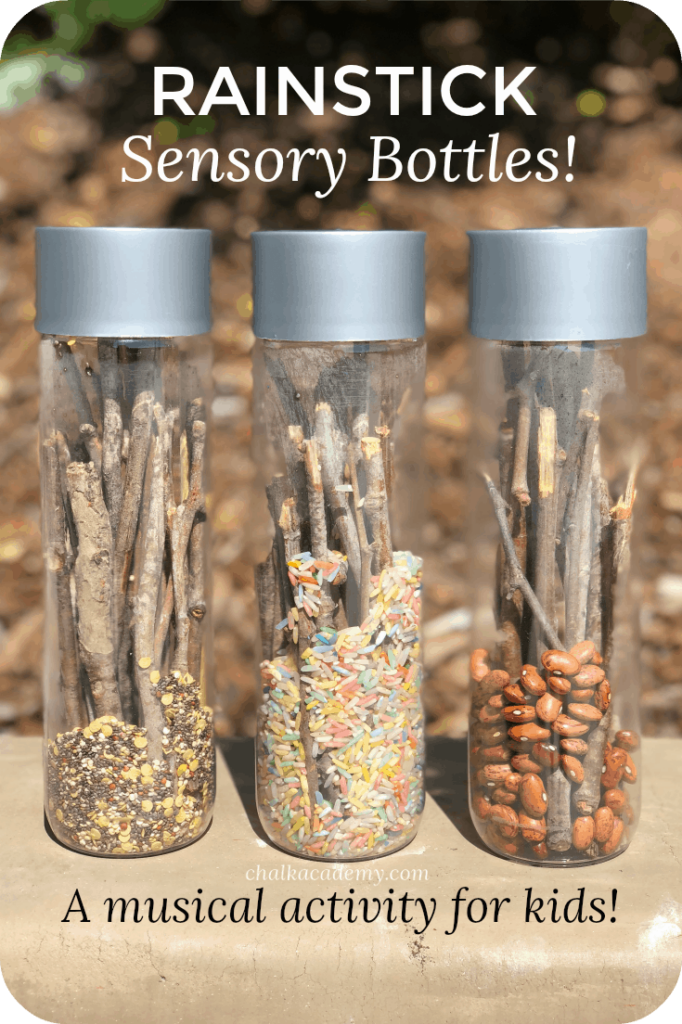Parts of a Flower Sorting, Science, and Literacy Activity (VIDEO)
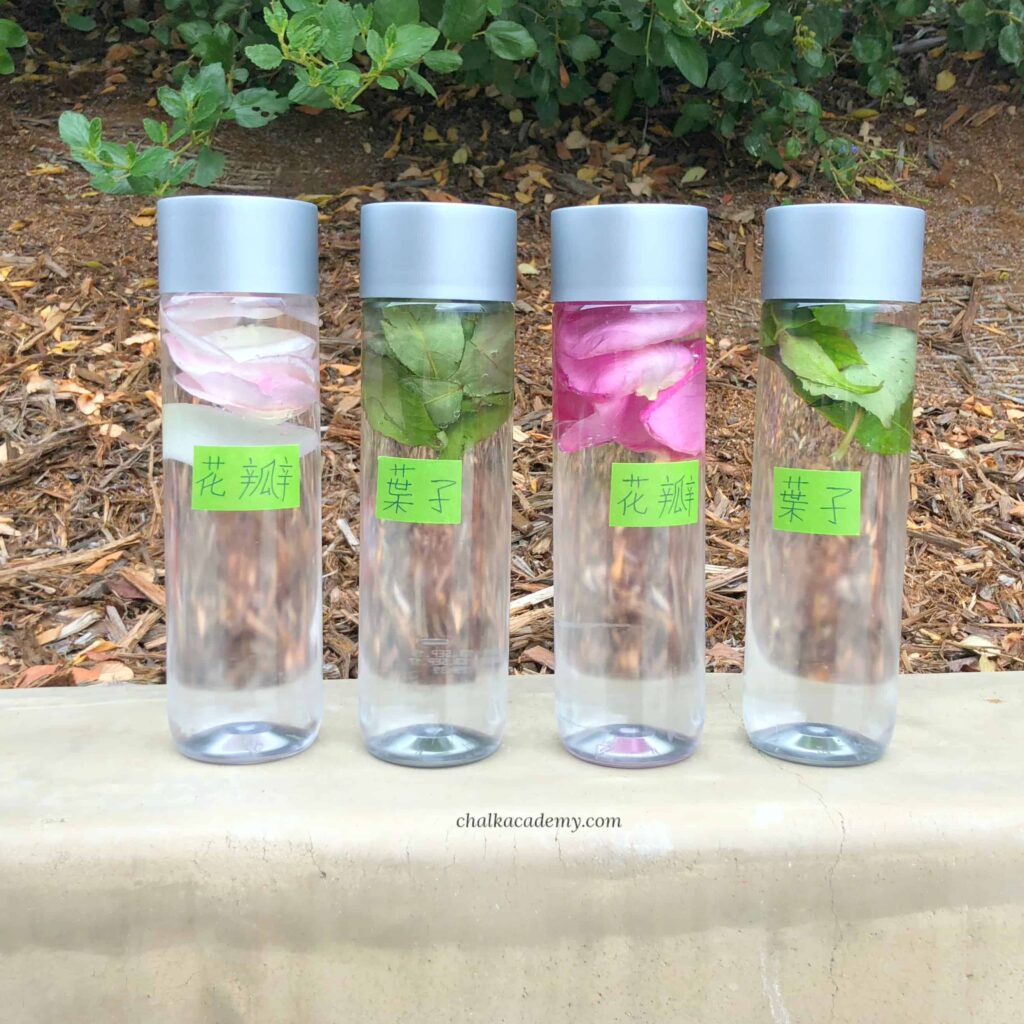
Today we had fun sorting, naming, and exploring the science of various parts of a flower! This was a great follow-up to our parts of a flower dot stickers activity.
Since my daughter and I are learning Chinese together, we reviewed bilingual flower names in Mandarin Chinese while I taught her the English translations. I’ll show you how we set up this flower science learning activity with a video at the end of the post!
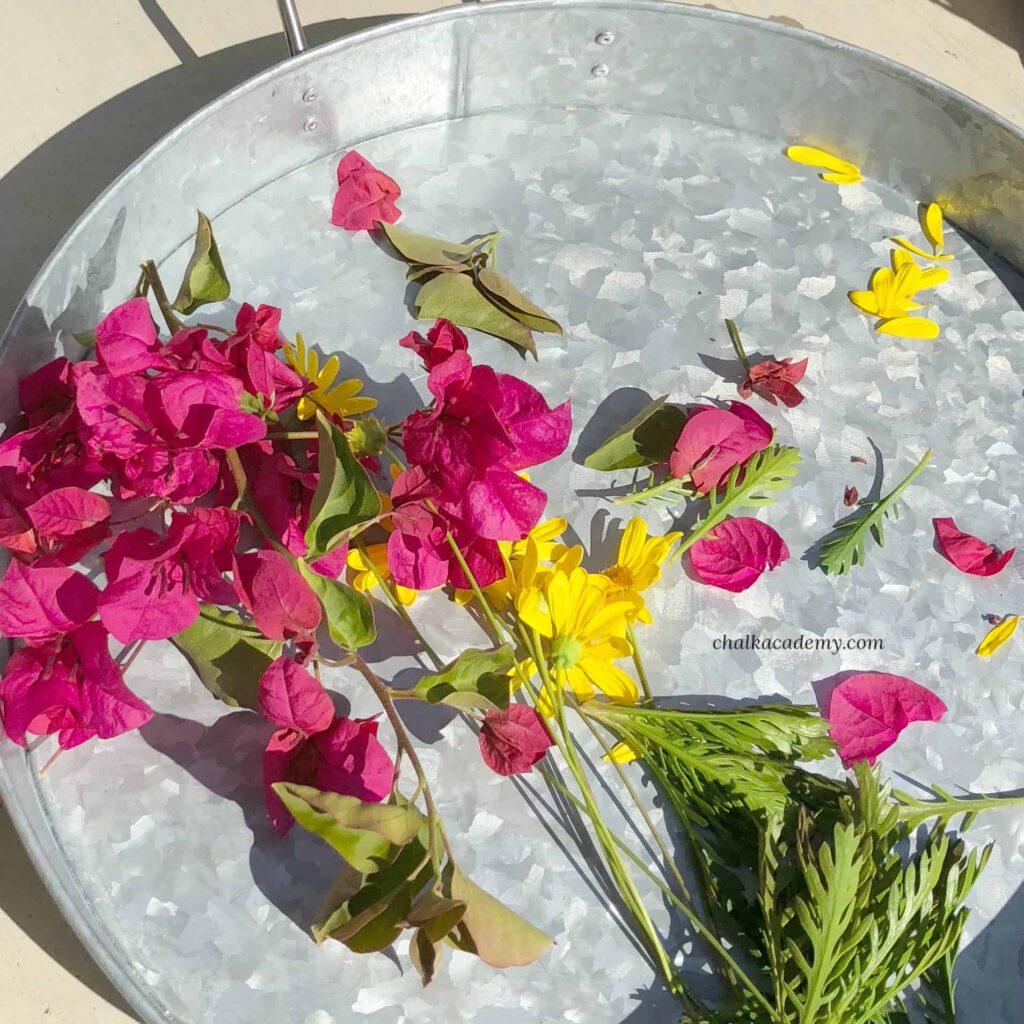
Chalk Academy is reader-supported. Some of the links are affiliate links. When you buy something through an affiliate link, we may earn a very small commission at no additional cost to you. More details here.
Try this: Fun Printable Scavenger Hunts for Kids (Chinese, Korean, English)
Flowers sorting and nature science activity for young children
Nature activities are great for a wide age range, as just being outside is relaxing and fun for exploration. Whenever I need an activity that suits both my 4-year-old daughter and 21-month-old son, I turn to nature!
Related: Leaf Sorting Sensory Bottles – Nature Discovery Activity for Kids!
Both kids had fun feeling the different textures of the soft petals, rough leaves, stick pollen, and firm stem.
My children both also saw how the different flower parts interact with water.
Some petals changed the water’s color, and different parts move faster in water compared to others!
I’m excited to share all of the photos and instructions for the activity, and I hope your children will enjoy it as well!

Chalk Academy is reader-supported. Some of the links are affiliate links. When you buy something through an affiliate link, we may earn a very small commission at no additional cost to you. More details here.
Important flower vocabulary in Chinese and English
Here are the bilingual names for part of a flower in simplified Chinese, traditional Chinese, Hanyu Pinyin, and English.
- 花 (Huā / flower)
- 花瓣 (Huābàn / flower petal)
- 花粉 (Huāfěn / pollen)
- 茎/莖 (Jīng / Stem)
- 萼片 (Èpiàn / Sepal)
- 叶/葉 (Yè / Leaf)
A fantastic book for this activity is Gail Gibbons’ From Seed to plant 种子是如何长成植物的. You can find this Montessori-friendly book with realistic illustrations at the following online bookstores:
- Simplified Chinese
- English
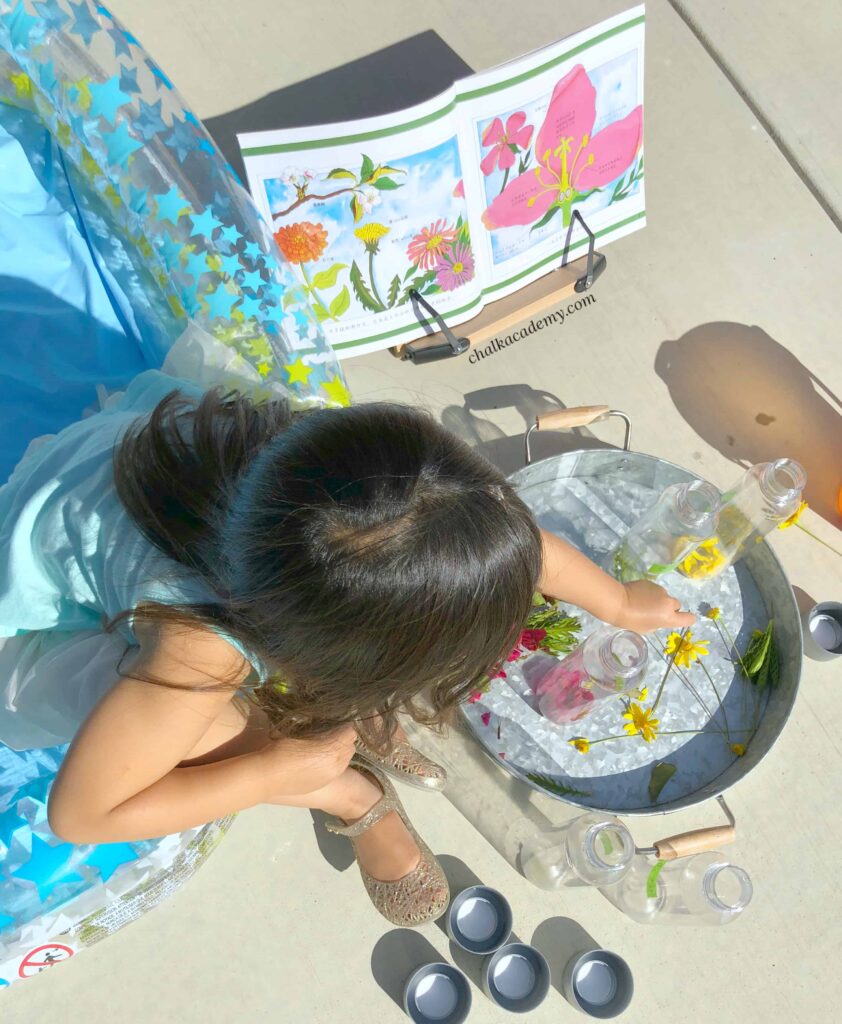
What you need to explore parts of a flower
- Tall glass cups or Voss water bottles – they are so pretty, and the label peels off easily compared to other bottles!
- Fresh flowers and leaves
- Index cards or paper
- Water
- Optional: Tray for organization – we love using this tray for sensory activities!
How to set up the parts of a flower activity
Depend on your child’s ages, see which steps they can do independently, with the help of an older sibling, or with your guidance!
- Write words on index card
- Sort flower parts according to the name on the index card
- Write words on painter’s tape; label each bottle
- Place a few petals, leaves, etc in each water bottle
- Add water to top of bottle
- Close cap tightly!
- Let your child observe the bottle, discuss findings, and then wait and see what happens after a few days!
Here are pictures of the parts of a flower sorted into their labeled bottles.

Then we added water to compare the floating of the leaves versus flower petals.

I wish I captured a “before” picture with the flowers in water, but after only 2 days, the bottle with the magenta bougainvillea completely took on the flower color!
Over a few days, the leaves gradually sank to the bottom of the bottle.
Video of parts of a flower science sensory bottles
Here is another parts of a flower sorting activity that we did. These turned out to be captivating sensory bottles for my toddler!
The roses were different than the prior set of bougainvillea flowers. After a few days, the water remained clear and each element stayed afloat!
Only the petals began to brown due to lack of oxygen from the closed lids.
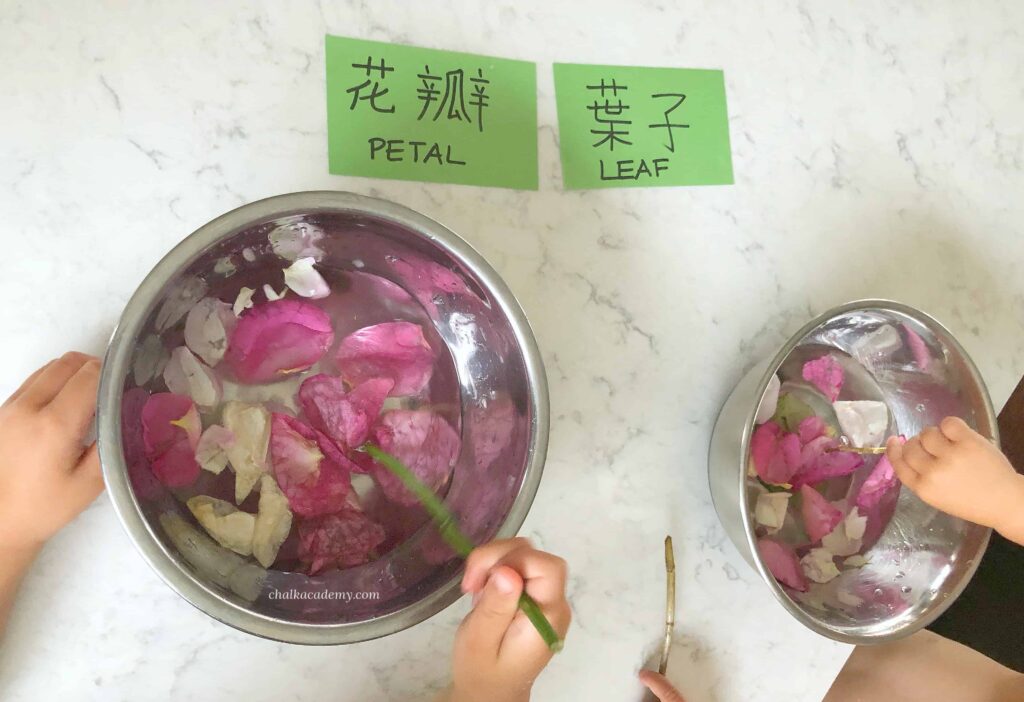
Pretend play and sensory exploration for toddlers
With the leftover flower petals, the kids had fun with imaginative play! We put the extra petals in a mixing bowl, and they used the stem and branches to swirl is around. Both kids had a blast pretending to cook up a meal for me and my husband.
Have you made parts of a flower sensory bottles with your kids or students?
If you try this activity, please let us know in the comments below! What age(s) are your kid(s), and how did it go? We’d love to hear about your learning experience!
